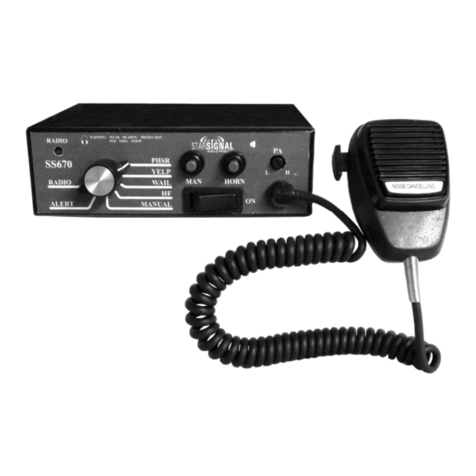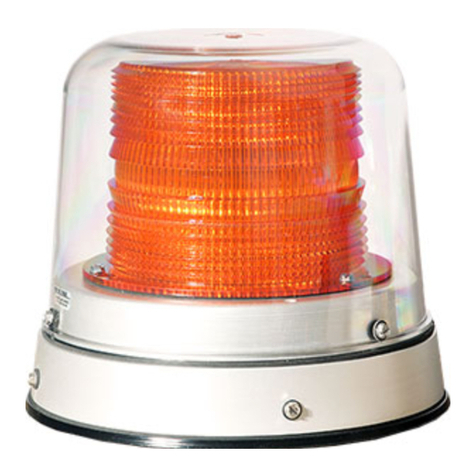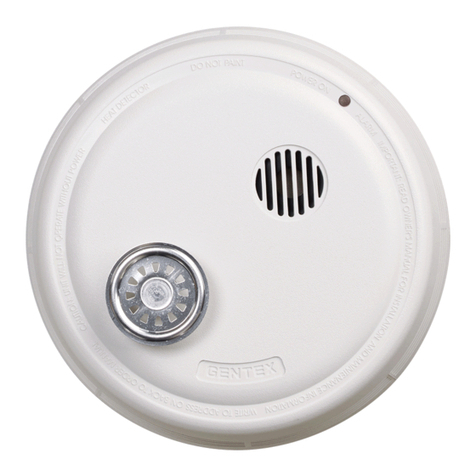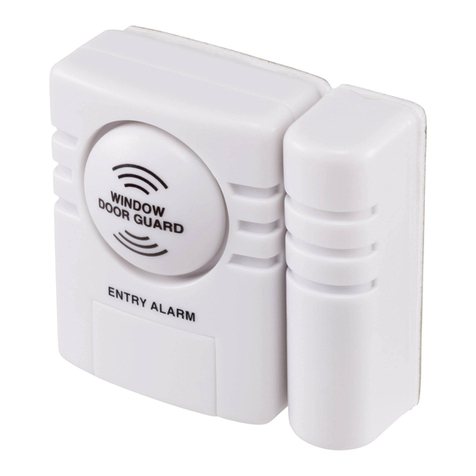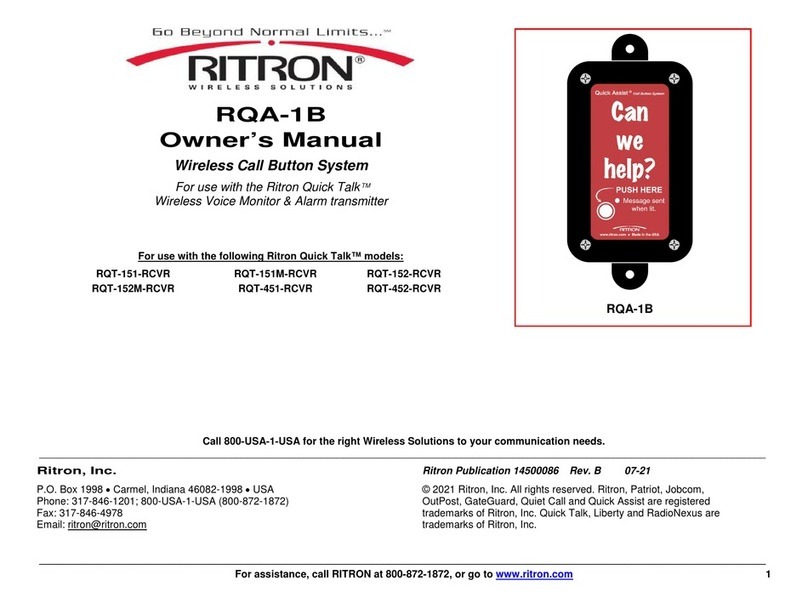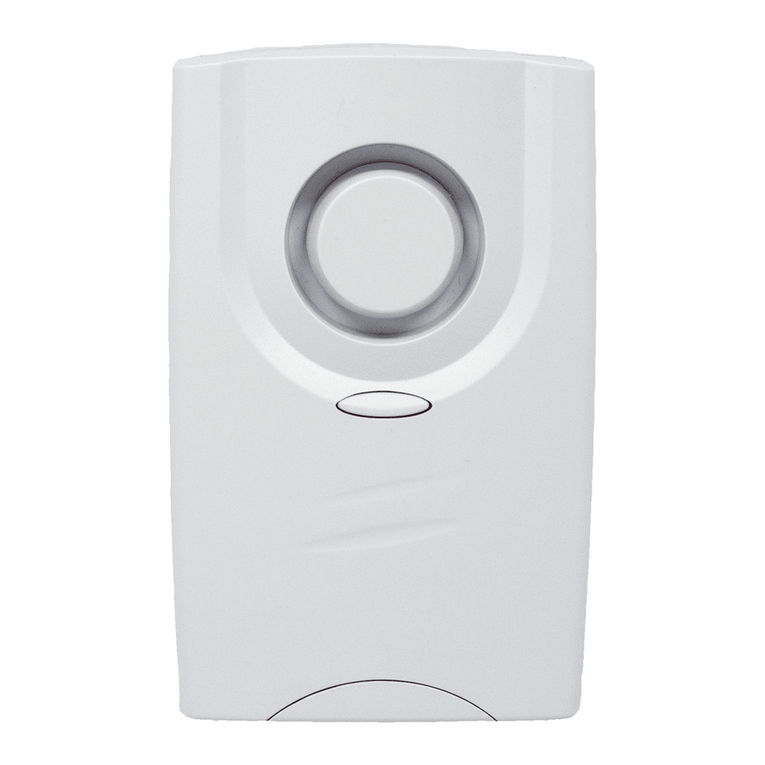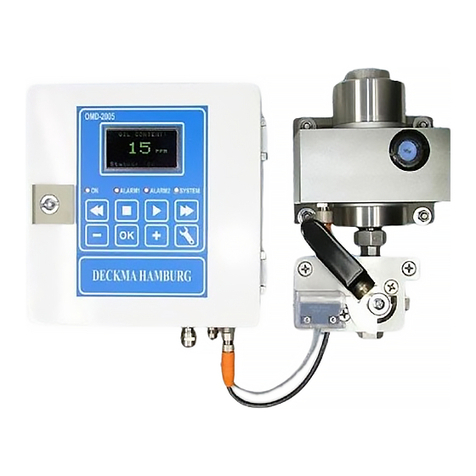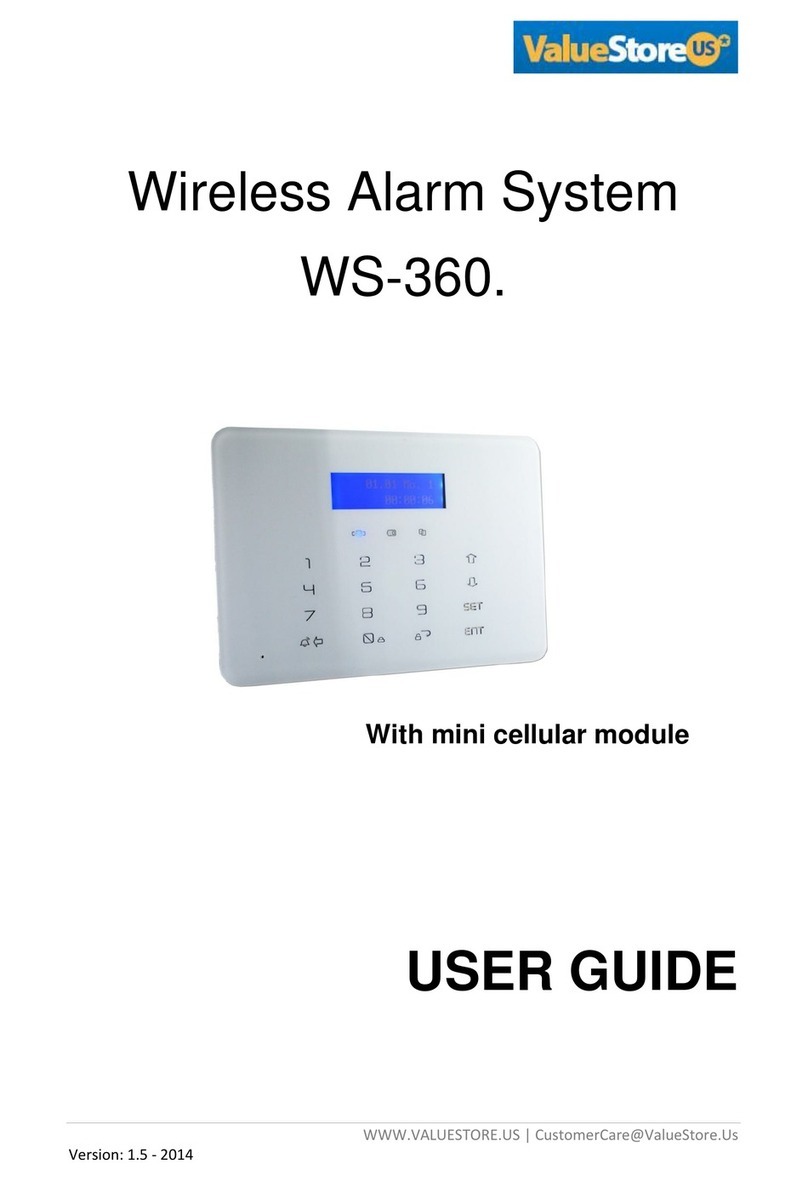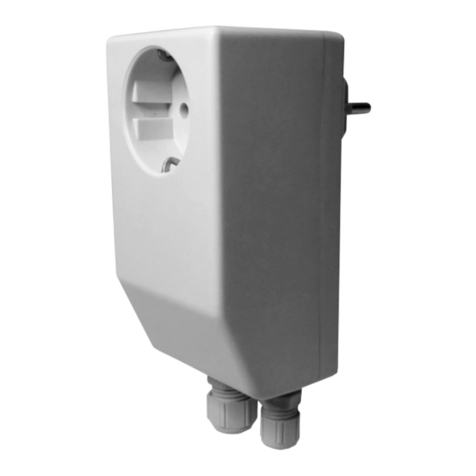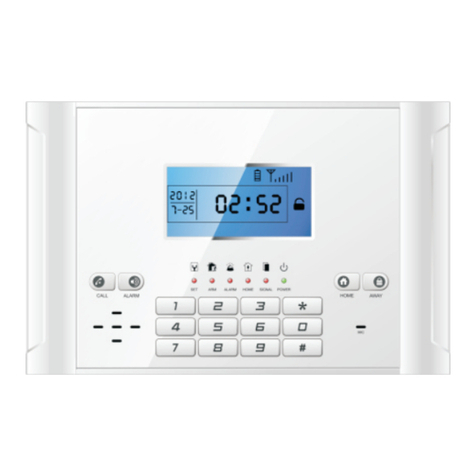Star Headlight & Lantern StarSignal SS741MG-11 User manual

PLITSTR250 REV F 5/15/17
DUAL AMPLIFIER SIREN
DUAL AMPLIFIER SIRENDUAL AMPLIFIER SIREN
DUAL AMPLIFIER SIREN
Installation and Operating Instructions
Installation and Operating InstructionsInstallation and Operating Instructions
Installation and Operating Instructions
SS741M
SS741MSS741M
SS741M -
--
-11
1111
11

-1-
Installation Information
MODEL: SS741MG-11 Serial #:
OPTIONS
PUR HASE DATE: Alternate Magnum Tones
INSTALLATION DATE: Two-Tone Enabled
INSTALLER: Phaser/Man Auxiliary
DEALER: Phaser Disabled
Model and serial number located on bottom of unit
TABLE OF CONTENTS
GENERAL DES RIPTION 1-2
INSTALLATION 2-10
SAFETY PRECAUTIONS 2 6
UNPACKING 2
INSTALLER-SELECTABLE OPTIONS 3-6
MOUNTING 6-7
ELECTRICAL CONNECTIONS 8-10
WIRING DIAGRAM 10
OPERATION 11-14
GENERAL 11
POWER 11
SELECTOR SWITCH 12
MANUAL 13
MAGNUM FUNCTION 13
HORN 13
VOLUME CONTROLS 14
AUXILIARY INPUT 14
PARK KILL 14
MICROPHONE 14
SERVI E 15-18
TROUBLESHOOTING 15
SPEAKER DIAGNOSTICS 16
RFI REDUCTION 16
PARTS 17
LIMITED WARRANTY 17
RETURNS 17
SPECIFICATIONS 18
CONTROL HEAD CUT-OUT INSTALLATION TEMPLATE 19
The SS741MG Remote Siren Amplifier is a premium 200W unit designed for dual 100W
speaker use. t comes standard with a remote control head and a noise-cancelling
microphone for PA use. The amplifier box contains two separate amplifiers that
allow the user to operate two separate and distinct tones at the same time. This
dual tone (Magnum) feature creates a unique sound that is one of the most
attention getting amplifiers on the market today. The Magnum sound allows a
single vehicle to sound like several vehicles traveling at the same time. Each
amplifier operates one 100W RMS speaker and has its own fuse.
The primary operating modes are Phaser, Yelp, Wail, Hands Free, Manual, Alert, and
Radio. A Noise Cancelling PA Override and push-button Horn Override are
available in all modes. A manual push-button is provided for push-on/push-off tone
toggle operation in the Phaser, Yelp, and Wail modes. t also allows manual siren
control in the Manual, Alert or Hands Free modes. The Phaser function can be
optionally replaced by Two-Tone, or disabled entirely, with program jumpers.
General Description

-2-
Installation Notes
Proper installation of the unit is essential for years of safe, reliable operation. Please
read all instructions before installing the unit. Failure to follow these instructions can
cause serious damage to the unit or vehicle and may void warranties.
Qualifications - The installer must have a firm knowledge of basic electricity, vehicle
electrical systems and emergency equipment.
Keep These nstructions - Keep these instructions in the vehicle or other safe place
for future reference. Advise the vehicle operator of the location.
UNPACK NG
nspect the contents for shipping damage. f found, alert the carrier immediately.
Contents should include:
Please contact your supplier immediately if any of these components are missing.
Another feature allows cycling through Wail, Yelp, Phaser and Standby by providing
a signal to the horn ring auxiliary wire when the function switch is in the Hands Free
(HF) position. A Park Kill option is provided for connection to a door switch, etc. to
disable the siren when exiting the vehicle. The PA volume control is provided on the
front panel of the control head, while the Radio volume is on the amplifier box. The
front panel is backlighted with LED’s for night visibility. This compact unit utilizes short
circuit, high voltage, low voltage, and reverse polarity protection systems for
maximum service life.
The SS741MG unit is designed to allow maximum versatility in mounting. The control
head is remote from the siren amplifier box creating a compact user interface plate
that can be flush mounted into the dashboard. The amplifier box can then be
mounted remotely in the trunk, under the dashboard, under the seat, or wherever
convenient.
The siren amplifier has been designed with several protection features to provide
exceptional field service. Excessively high or low voltage detection will disable the
siren output to protect both the amplifier and the speaker. Fused inputs provide
safety against reverse polarity. Speaker diagnostics provides user feedback as well
as shutdown protection if the speaker output becomes either electrically open or
shorted. The two separate independent amplifiers allow redundancy backup,
should one speaker short out during operation the other amplifier and speaker will
remain fully operational. CAUT ON: These protection features will not guard against
overloading the outputs.
The SS741MG unit is available in the following different versions:
SS741MG Standard version w/ microphone mounted to the face plate.
SS741MGX Remote microphone connected to the back of the control head via
an extension harness.
SS741MG-TEC Standard Version with reversed 7-position knob functions.
(1) instruction booklet
(1) amplifier box
(1) control head with microphone
(1) microphone bracket w/(2) screws
(1) amplifier wire harness with connector
(1) communication cable
(telephone-style cable)
(2) control head power wires
(General Description CONT’D)

-3-
There are several options that can be selected during installation. Jumpers on the
back of the control head, as well as on the printed circuit board inside the amplifier
case, allow the installer to select these various options. These options should be set
before installation of the unit.
Amplifier Cover Removal
Installer Selectable Options
Remove the four protruding Philips
head screws located on the top
of the amplifier unit, and the four
flush Philips head screws on the
sides of the amplifier unit. DO NOT
REMOVE THE FOUR RECESSED
SCREWS ON THE UNDERS DE OF THE
AMPL F ER! Lift the top cover
upwards. This cover can be
removed completely from the
amplifier unit.
Auxiliary Input Polarity
The auxiliary input is normally activated by applying a positive voltage to the wire.
f, instead, you would like to activate the auxiliary input by connecting it to ground
(negative), move the “AUX” option jumper from the “Pos. Switching” pins to the
“Neg. Switching” pins in the amplifier unit. (See Amplifier diagram below). The wiring
diagram on page 10 shows two connection examples.

-4-
Park Kill Input Polarity
The Park Kill (Cutout) nput turns off any siren tone output when activated, and
remains off until a control is activated or changed. The wiring diagram on page 11
shows two connection examples.
The park kill input is normally activated by connecting to positive. To activate by
connecting to ground (negative), move the “PK LL” option jumper from the “Pos.
Switching” pins to the “Neg. Switching” pins in the amplifier unit. (See Amplifier
diagram below).
Alternate Magnum Tones
The Magnum feature allows the two speakers to either have two different siren tones
at the same time, or can offset the same tone from one speaker to the other. This
sound simulates two separate vehicles and allows maximum attention getting
ability.
For those end users who prefer to have the Magnum feature default using two
different tones every time it is utilized, and option jumper is provided on the back of
the control head. To select the alternate Magnum tones, remove the first option
jumper from the back of the control head. (See diagram to the right). For full
description of tones, see the OPERAT ON section on pages 11 to 14. .
(Installer Selectable Options CONT’D)

-5-
Auxiliary Input Fun tion
The Auxiliary nput allows activation by an external source of either the Horn or the
Manual push-button functions when the rotary selector switch is in the Manual, Alert,
or Hands Free (HF) position. This input is usually wired into the vehicle horn switch.
The wiring diagram on page 10 shows two connection examples. NOTE: Permanent
disconnection of the vehicle horn is NOT recommended.
The siren is factory shipped with the auxiliary input option defaulted as the Horn
function. To utilize the auxiliary input as the Manual function instead of the Horn
function, remove the third option jumper from the back of the control head. (See
diagram BELOW).
Two-Tone
Two-Tone can replace functions with Phaser by removing the fourth option jumper
from the back of the control head. (See diagram below).
(Back of Control Head)
(Back of Control Head)
(Installer Selectable Options CONT’D)
Phaser Disable
The Phaser function can be completely disabled by removing the second option
jumper from the back of the control head. This will also disable the
Two-Tone function used when the manual button is pressed while the mode switch is
in the Phaser position. (See diagram below).
(Back of Control Head)

-6-
Mounting
Horn Ring Transfer
The installer may opt to have the sirens electronic air horn replace the vehicle horn.
This can be done by adding a single pole, double throw (SPDT) switch. Two Horn
Ring Transfer wiring diagrams are shown below.
SAFETY PRECAUTIONS
For the safety of the installer, vehicle operator, passengers and the community
please observe the following safety precautions. Failure to follow all safety
precautions and instructions may result in property damage, injury or death.
!!! WARNING !!!
DO NOT mount in air bag deployment area.
Devices s ould be mounted only in locations listed in SAE standard J1849.
Controls s ould be placed wit in convenient reac of t e driver.
Assure clearances before drilling in ve icle.
Sound levels produced by attac ed speakers can cause permanent earing loss.
Never operate t is unit wit out adequate earing protection for you and ot ers.
in t e area. (OSHA 1910.95)
AMPLIFIER
The amplifier should be mounted in a location such
as the driver compartment firewall, under the seat, or
in the trunk. t is not recommended to mount the
amplifier in the engine compartment or in an area
that would be allowed direct exposure to weather
elements. Choose a mounting location away from
any air bag deployment areas. Assure adequate
ventilation to prevent overheating
The amplifier unit is provided with a mounting flange that contains four 1/4" holes.
Using the amplifier unit itself as a template, mark the location of the four mounting
holes to be drilled. Be sure to check for obstructions behind the mounting hole
locations. Drill the four mounting holes and secure the amplifier using appropriate
hardware (not supplied). Be sure that all wiring harness connections are made prior
to connecting the harness to the amplifier unit.
(Installer Selectable Options CONT’D)

-7-
CONTROL HEAD
The control head is designed to be flush mounted. Select a location such as the
dash, the overhead console, or a center console. Choose a mounting location
convenient to the operator and away from any air bag deployment areas. Be sure
to choose a location that has at least two inches of depth to accommodate the
control head and cables. Consider wire routing and access to connections when
selecting location as well.
Mark the mounting hole locations and the area to be cut out using the control head
installation template provided on page 19. CAUT ON: Use extreme caution not to
oversize the cutout area. The control head will only overlap this cutout hole by 1/8"
on the top and the bottom. Temporarily place the control head in the cutout
opening to verify the alignment of the unit. Remove the control head and connect
the communication cable and the two power cables. f the option jumpers on the
back of the control head have not been previously set, refer to the nstaller
Selectable Options section on pages 3-6. Permanently mount the control using four
#6 screws (not provided).
MICROPHONE BRACKET
A metal clip is provided for mounting the
microphone. Choose a location convenient to
the operator and away from any air bag
deployment areas. Using the mounting clip as a
template, mark the two holes to be drilled. Using
a 1/8" drill bit, drill the two mounting holes. nstall
the two #6 screws provided with the bracket.
(Mounting CONT’D)

-8-
Electrical power connections to the amplifier are made using a removable
connector located on the back of the amplifier case. Communication between
the control head and the amplifier are made via a special communication cable.
CAUT ON: Please note that this cable S NOT a standard telephone cord and
CANNOT be replaced with one. You should make all electrical connections to the
power connector before installing the connector on the unit. f the unit needs
service, both the communication cable and the power connector can be easily
removed without unwiring the connector.
The power supply of the unit must be capable of delivering peak currents up to 50
amps for adequate short circuit protection and reliable operation. The preferred
source is directly at the vehicle battery. The unit is internally fused. A wiring diagram
on the next page shows detail of how to wire the power connector on the amplifier
to the vehicle. The communication cable has both ends identical, and should have
one end plugged into the amplifier (RJ11 port) and the other end plugged into the
control head (RJ11 port).
Electrical Connections
AMPLIFIER
CONTROL HEAD
Electrical power connections to the control head are made using one male and
one female spade terminal. Communication between the control head and the
amplifier are made via a communication cable with an RJ11 connector. The black
wire included in the kit with the female terminal should be plugged into the male
spade terminal on the back of the control head. The red wire included in the kit
with the male terminal should be plugged into the female terminal on the back of
the control head. The communication cable has both ends identical, and should
have one end plugged into the amplifier (RJ11 port) and the other end plugged
into the control head (RJ11 port)
Please Note: This is NOT a standard telephone cable.
- 5 -
Communication
Cable (w/RJ11 jacks)
Red: +12VDC
Black: GROUND
!
!!
!
CA TION: NOT REPLACEABLE WITH A
STANDARD TELEPHONE CABLE
Rear of SS741 Control Head

-9-
Wire Size and Termination
The wiring diagram on the next page shows the minimum wire size used for each
connection, along with recommended lead color. Please use the following
guidelines when wiring your siren:
f the wire is longer than 10 ft. use the next larger wire size. Use only high
quality crimp connectors.
Make sure all connections are tight.
Route the wiring to prevent wear, overheating and/or interference with air
bag deployment.
Use grommets and sealant when passing through compartment walls.
Minimize the number of splices to reduce voltage drop.
Ground connections should only be made to substantial chassis
components, preferably directly to the negative of the vehicle battery.
nstall and check all wiring before connection to vehicle battery.
(Electrical Connections CONT’D)
Wiring Conne tions
BLACK: You MUST connect BOTH black wires when using two 100W driver speakers. Connect
to the negative of the battery, or to a good chassis ground. Be sure to use minimum
size #14 AWG wire.
R D: You MUST connect BOTH red wires when using two 100W driver speakers. Connect to
the positive of the battery, or to a high current power buss. A power relay may also
be used. Be sure to use minimum size #14 AWG wire.
BROWN: Connect to the positive terminal or lead of Speaker 1. Be sure to use minimum size
#14 AWG wire.
WHIT w/ BROWN STRIP : Connect to the negative terminal or lead of Speaker 1. Be sure to use
minimum size #14 AWG wire.
Please note: The Brown and White w/Brown Stripe wire must be onne ted for PA and Radio Repeat)
ORANG : Connect to the positive terminal or lead of Speaker 2. Be sure to use minimum size
#14 AWG wire.
WHIT w/ ORANG STRIP : Connect to the negative terminal or lead of Speaker 2. Be sure to use
minimum size #14 AWG wire.
You must observe the polarity of the speakers (phasing). Be sure the positive terminals of both
speakers are onne ted to the solid brown wire and solid orange wire from the siren. The
negative terminals of both speakers should be onne ted to the white, same olor stripe, striped
wires from the siren.
Optional Conne tions:
BLU : Use for radio repeat. Connect one blue lead to each terminal of the radio speaker or
output connector of the radio. Most radio outputs are isolated, in which polarity
would not be important. Radios with polarity sensitive outputs should be connected
w/ the blue wire from pin 6 to the positive radio output, and the blue wire from pin 3 to
the negative radio output. Use #18 AWG wire.
GR N: Use for remote (Aux.) Manual control. Connect to horn ring circuit or remote switch.
Circuit may be positive or negative with proper jumper selection. See NSTALLER-
SELECTABLE OPT ONS section (page 3) for jumper details. NOT : Cut lead short if not
used & insulate w/ electrical tape.
WHIT : Used for Park Kill (Cut-off). Connect to dome light or added door switch. Circuit may
be positive or negative with proper jumper selection. See NSTALLER-SELECTABLE
OPT ON section (page 4) for jumper details. NOT : Be sure to cut lead short if not used
and insulate with electrical tape.
Testing - Test all siren functions after installation to assure proper operation. Test vehicle
operation to assure no damage to vehicle.

-10-
(Electrical Connections CONT’D)
SIREN
Horn
Switch/Relay
+12 VDC
7 - Brown (#14 AWG)
12 - White w/Brown (#14 AWG)
Negative Switching PK
Jumper Selected
Positive Switching PK
Jumper Selected
VEHICLE
HORN
Positive Switching AUX
Horn Jumper Selected
7 - Brown (#14 AWG)
9 - Green (#18 AWG)
12 - White w/Brown (#14 AWG)
11 - White w/Orange (#14 AWG)
10 - Orange (#14 AWG)
1 - Red (#14 AWG)
2 - Black (#14 AWG)
3 - Blue (#18 AWG)
5 - Black (#14 AWG)
4 - Red (#14 AWG)
8 - White (#18 AWG)
6 - Blue (#18 AWG)
1 and 4 - Red
2 and 5 - Black
BATTERY
+
Positive
Switching
AUX
OR
Connect the Blue wires to
the terminals of speaker or
to the output jack of radio
Negative Switching AUX
Horn Jumper Selected
3 - Blue (#18 AWG)
6 - Blue (#18 AWG)
8 - White (#18 AWG)
RADIO
+
OR
Negative
Switching
AUX
OR
VEHICLE
HORN
SPEAKER 2
11 OHMS
Horn
Switch/Relay
+
+12 VDC
+12 VDC
SPEAKER 1
11 OHMS
(Radio & PA)
Added Door
Switch
Dome
Light
Door Switch
+

-11-
Operation
Please note that for the SS7 1MG-TEC the 7-position knob functions are reversed.
This unit is designed for easy operation under the stress associated with high-speed
pursuit. Most siren functions are accessible with one simple motion without repetitive
activation of switches or automatic timed switching that can interfere with desired
operation.
Power
n order for the siren to function, the power switch must
be in the ON position. When turned on, the siren may
be activated at the operator’s discretion.
General
Sele tor Swit h
The rotary selector switch controls the primary operating function of the siren.
PHSR - Ultra-fast changing tone used for maximum attention.
YELP - A rapidly changing tone used in congested areas.
WAIL - A slower changing tone used on highways.
HF - Hands Free - A silent standby mode also
known as Horn Ring Cycler. Allows the user
to cycle through the tones programmed for
the WA L, YELP, PHSR, and OFF by repeatedly
pressing the horn or other switch connected
to the AUX input. Changing the rotary knob
to any other mode will resume normal siren
operation.
MAN - A silent standby mode that allows push-button
Manual, push-button Horn, and Public Address
operation. The siren output winds down when
the MAN button is released.
ALERT - A silent standby mode that allows push-button Manual, push-button Horn
and Public Address operation. The siren output terminates immediately
when the MAN button is released.
RADIO - Also known as Radio Repeat, this function amplifies a two-way radio
speaker input for re-broadcast outside the vehicle through speaker #2.
The PA remains functional, but no siren tones are available in this position.
Please note that for the
SS7 1MG-TEC the 7-position
knob functions are reversed.

-12-
(Operation CONT’D)
(NOTE: PHASER and TWO-TONE may be optionally swapped or disabled via
program jumpers. See NSTALLER-SELECTABLE OPT ONS on pages 4-5.)
Mode vs. Output:
Rotary
Switch
Position:
Speaker
Output
Tone
Pressing the Manual Pushbutton
hanges the Tone To:
Phaser Phaser Two-Tone
Yelp Yelp Phaser
Wail Wail Yelp
Hands Free No Output
Creates a manual WAIL tone while button
is being held that sweeps down when the
button is released.
Manual No Output
Creates a manual WAIL tone while button
is being held that sweeps down when the
button is released.
Alert No Output
Creates a manual WAIL tone while button
is being held that stops immediately when
the button is released.
MAN Button
Rotary Switch
Position Function When MAN Pressed
MAN / HF / ALERT Produces a manually
activated Wail tone. (Note:
The MAN button has no effect
when in HF mode and a tone is
active.)
PHSR/YELP/WAIL The MAN button will “step” the siren up to the tone programmed
for the next function:
(WAILYELPPHSRPhaser Step Up)
These quicker tones are used to momentarily alert motorists at
intersections and very highly congested areas. Pressing the
MAN button once changes to the next faster tone. Pressing the
MAN button again, reverts the siren back to the original tone.
Optional configuration allows the replacement of the Phaser tone with Two-Tone, or
the disabling the Phaser tone entirely. These options are selected during installation
and may be governed by State or Local laws. (Refer to the NSTALLER SELECTABLE
OPT ONS section on page 4).
HORN Button
Pressing the HORN button provides a simulated air-horn tone while pressed. This can
be used to either replace or to supplement the normal vehicle horn and is useful at
intersections. This tone will override all other siren tones..
The front panel contains two momentary push-button switches for the Manual
function and the Air Horn.

-13-
(Operation CONT’D)
Magnum Mode:
Rotary Switch
Position:
Speakers
1 / 2
Pressing Manual Pushbutton
1 / 2
Phaser Wail/Phaser Wail/Two-Tone
Yelp Double Yelp
(Staggered)
Yelp/Phaser
Wail Double Wail
(Staggered)
Wail/Yelp
Hands Free No Output
Creates two staggered manual WAIL
tones while button is being held that
sweep down when the button is released.
Manual No Output
Creates two staggered manual WAIL
tones while button is being held that
sweep down when the button is released.
Alert No Output
Creates two staggered manual WAIL
tones while button is being held that stop
immediately when the button is released.
Alternate Magnum Mode:
Rotary Switch
Position:
Speakers
1 / 2
Pressing Manual Pushbutton
1 / 2
Phaser Wail/Phaser Wail/Two-Tone
Yelp Yelp/Phaser Yelp/Two-Tone
Wail Wail/Yelp Wail/Phaser
Hands Free No Output
Creates two staggered manual WAIL tones
while button is being held that sweep down
when the button is released.
Manual No Output
Creates two staggered manual WAIL tones
while button is being held that sweep down
when the button is released.
Alert No Output
Creates two staggered manual WAIL tones
while button is being held that stop
immediately when the button is released.
(NOTE: PHASER and TWO-TONE may be optionally swapped or disabled
via program jumpers. See NSTALLER-SELECTABLE OPT ONS on page 4.)
(NOTE: PHASER and TWO-TONE may be optionally swapped or disabled
via program jumpers. See NSTALLER-SELECTABLE OPT ONS on page 4.)

-14-
VOLUME CONTROLS
Radio Repeat Volume
The radio repeat volume is recessed on the
front face of the amplifier next to the
communication jack. This should be set when
the vehicle is parked. First set the volume level
of the vehicle’s two-way radio to its normal
operating volume. Adjust the siren’s rotary
selector switch into the RAD O position. nsert a
small, flat blade screwdriver into the RAD O
volume adjustment port. Turn clockwise
direction to increase the sound level.
PA Volume
The PA volume control is provided for public address volume. This is
located in the upper right hand corner of the control head. t
should be set when the vehicle is parked. Set the PA volume to the
maximum level with no feedback (squeal).
AUXILIARY INPUT
The auxiliary input may be connected to the vehicle horn ring or other switching
device. t provides the same operation as pressing the HORN button or can be
programmed to function like the MAN button.
PARK KILL CUT OUT
During installation, the Park-Kill input may be connected to a door switch (see page
2). t will automatically turn off any siren tone when the door is opened. The siren
tone will continue to be cut off even when the door is closed. Changing any switch
or input will restore normal function.
(Operation CONT’D)
DETACHABLE MICROPHONE
(SS741MGX only)
The microphone (P/N P30232-2) can be used for public address
operation. t will override any siren tone when its push-to-talk (button on
the side) is pressed.
Connect the microphone to the adapter
harness (SWH-40). Review the diagram below
for proper pin layout. Note the ridge in the
connector.
The white amp connector can then be
attached to the corresponding
connector on the amp.
RIDGE

-15-
Troubleshooting
Symptom Possible Cause Check
No power Power switc not turned on
Connector loose
Amplifier 15A fuse blown
(one or bot )
Loose connection at power source
Does back-lig ting come on?
Do you ear a “pop” w en turned on?
Is power ooked up backwards? Positive ground
ve icle?
Is an external fuse or circuit breaker used?
Are t e negative leads connected to a good
ground?
No siren
tone - PA
works
Hig voltage protection
Low voltage protection
Microp one button stuck
Park Kill polarity option set wrong
Park Kill activated
T e input voltage must be less t an 16 volts.
T e input must be greater t an 10V wit t e
siren turned on.
Does microp one button release properly?
Is t e PK jumper option properly configured?
Does t e siren work w en Park Kill input is
disconnected?
No siren
tone - No
sound
Bad speaker or speaker wiring Does eit er speaker diagnostic LED flas ?
C eck for a s ort.
Does neit er speaker LED turn on steady?
C eck for an open.
No PA PA volume not set properly Have you tried turning t e PA volume control?
Distorted
siren sound
Speaker assembly loose
Intermittent Aux. Input connection
Low or ig ve icle voltage
Is t e speaker bell or tip loose?
Is t e Aux. Input used and wired properly?
Input voltage must be between 10 & 16 volts
w ile siren is on.
Intermittent
siren tone
Hig voltage protection
Low voltage protection
Microp one button activation
Circuit breaker in supply
connection
S orted speaker or speaker wire
Is t e ve icle voltage regulator working
properly?
Is t e connector tig t on t e back of t e unit?
Is t ere a loose connection on a power lead?
T e input must be greater t an 10V wit t e
siren turned on.
Is somet ing lying on t e microp one?
Is a circuit breaker used wit at least a 50A
rating?
Does t e speaker ave water damage, or is a
wire pinc ed?
Horn
function or
Manual
function
stuck on
Horn switc stuck
MAN pus -button switc stuck
Aux. Input improperly connected
Aux. Input Polarity Option set
wrong
Does t e orn switc return fully w en
released?
Does t e MAN pus -button switc return fully
w en released?
Is t e AUX Input used and wired properly?
Is t e AUX jumper option properly configured?
No Radio
No or Low
Radio
Unit not connected to radio
Radio volume too low
Radio outputs not isolated and
polarity ooked up backwards
Is t e radio connected properly to t e unit?
Can you ear t e radio in t e ve icle?
Have you tried turning t e Radio volume
control?
Are t e radio wires connected to t e correct
polarity from t e radio output?
Wrong
siren tone
Two-Tone option jumper installed
Aux. Input set to wrong function
Alternate Magnum jumper installed
Is t e TT jumper option properly configured?
Is t e AUX jumper option configured properly?
Is t e Alternate Magnum tone jumper
configured properly?
P aser not
working
P aser disabled Is t e PD jumper option configured properly?

-16-
RFI Interferen e
1. Make sure that both the control head and amp are securely attached to good
chassis ground (i.e. no paint in-between the chassis and the grounding terminal).
2. Keep the siren control head and the police radio as far away from one another
as is practical.
3. Check that the police radio antenna wire makes a right angle from the back of
the police radio and runs on one side of the vehicle. The communications cable
for the siren should make a right angle out of the back of the control head and
exit in the opposite direction from both the police radio antenna wire and the
police radio power wires.
4. Excess communication cable from the control head to the amp should be tightly
bound back near the amplifier box.
5. An RF choke (www.digikey.com P/N: 240-2066; STAR P/N: P30039-57) can be
placed around the communications cable at the back of the siren amplifier box.
6. You can also place a second RF choke around the Red and Black wires exiting
the siren amplifier box.
(Troubleshooting CONT’D)
SI RE N C O N T R O L H EA D R A D IO
R A D IO P O W ER W IRE S
AN TE N N A L EA D
S IR EN C O M M U N IC A T IO N S C A B L E
S IR EN P O W ER W IRE S
SI R EN A M P
R FI C H O K E S
B A TT E R Y
Speaker Diagnosti s
There are two diagnostic LED’s located in the lower left hand
corner of the control head. These LED’s will only turn on while
a tone is trying to be generated. Status of the speakers are
indicated as follows:
Steady - Speaker is connected and operating properly.
Flashing - There is an electrical short in the speaker or wires
to the speaker.
Off - No speaker is connected, or
- The siren is not activated to output a tone to the speaker, or
- The speaker or wire connection is loose or is electrically open

-17-
Parts
Service
Specifications
* CAUTION: This is not a standard telephone cable and CANNOT be replaced with one.
Input Voltage
10 - 16 VDC (negative ground)
Input Current
16 Amps @ 13.6 VDC (dual 100W speakers)
Standby Current
Less t an 150 mA
Audio Frequency
200Hz - 10 kHz + 3db
Audio Output
40 watts @13.6 VDC (single 100W speaker)
Output Power
105 WATTS RMS MAX. (15.0 VDC - single 100W speaker)
210 WATTS RMS MAX. (15.0 VDC - dual 100W speakers)
Siren Frequency
675Hz - 1633Hz
Hig Voltage Protection
16 - 18 VDC will cause siren output to cease, resume at normal
S ort Circuit Current
50 AMPS (supply circuit must be capable of supplying t is)
Operating Temperature
-15° F to +140°F
Controls
7-position rotary switc (Radio, Alert, Man, HF, Wail, Yelp, P sr)
Momentary pus -button Horn switc
Momentary pus -button Manual/Toggle switc
Magnum feature (two separate tones at t e same time)
Auxiliary input connection for remote Manual or Hands Free operation
-jumper programmable for positive or negative orn
Park Kill input connection
-jumper programmable for positive or negative activation
P aser (and Two-Tone) disable (jumper programmable)
Two-Tone activation swaps modes wit P aser (jumper programmable)
Alternate Magnum tones (jumper programmable)
Diagnostic Indicators
Two LED indicators provide diagnostic feedback, one for eac speaker.
Connections
(12-Pin Connector)
Detac able, 12-pin, positive locking connector wit pigtail leads for Amplifier.
(2) Positive, (2) Negative, (4) Speaker, (2) Radio, Auxiliary, Park Kill, Horn
Telep one style communication cable between Control Head and Amplifier
Power wires wit Fast-On spade terminals for Control Head power.
Size
Amplifier: 2-1/2” Hig , 7” Wide, 7-3/8” Deep (plus 3/4" flange on eac side)
Control Head Face Plate: 2-7/8" Hig , 6-1/4" Wide, 1-1/2" Deep
Control Head Mounting Hole: 2-5/8" Hig , 5-1/4" Wide, 2" Deep
Boxed Weig t
8.3 lbs.
Part Description
P30235-4 Siren Top Cover
P30234-4 Siren Bottom Mounting Plate
SWH-31 Wiring Harness
P30069-38 Microp one Bracket wit Screws
P30053-31 Amplifier Case Screws
P30028-8 5 Amp Automotive Blade Fuse for Control Head
P30028-6 15 Amp Automotive Blade Fuse for Amplifier
P30232-1 Noise Cancelling Microp one
P30208-10 Microp one Strain Relief
P30032-8 TIP36C Power Transistor
P30239-1 Rotary Selector Switc Knob
P30239-2 PA Volume Knob
P30148-8 Communications Cable*

-18-
ONE YEAR LIMITED WARRANTY
The manufacturer warrants each new product against factory defects in material
and workmanship for one year after the date of purchase. The owner will be
responsible for returning to the Service Center any defective item(s) with the
transportation costs prepaid. The manufacturer will, without charge, repair or
replace at its option, products, or part(s), which its inspection determines to be
defective. Repaired or replacement item(s) will be returned to the purchaser with
transportation costs prepaid from the service point. A copy of the purchaser's
receipt must be returned with the defective item(s) in order to qualify for the
warranty coverage. Exclusions from this warranty include, but are not limited to,
bulbs, strobe tubes, domes, and/or the finish. This warranty shall not apply to any
light, which has been altered, such that in the manufacturer's judgment, the
performance or reliability has been affected, or if any damage has resulted from
abnormal use or service.
There are no warranties expressed or implied (including any warranty of
merchantability or fitness), which extend this warranty period. The loss of use of the
produ t, loss of time, in onvenien e, ommer ial loss or onsequential damages,
in luding osts of any labor, are not overed. The manufacturer reserves the right to
change the design of the product without assuming any obligation to modify any
product previously manufactured.
This warranty gives you specific legal rights. You might also have additional rights
that may vary from state to state. Some states do not allow limitations on how long
an implied warranty lasts. Some states do not allow the exclusion or limitation of
incidental or consequential damages. Therefore, the above limitation(s) or
exclusion(s) may not apply to you.
f you have any questions concerning this or any other product, please contact
our Customer Servi e Department at (585) 226-9787.
f a product must be returned for any reason, please contact our
Customer Service Department to obtain a Returned Materials Authorization
number (RMA #) before you ship the product back.
Please write the RMA # clearly on the package near the mailing label.
NOTICE
Due to continuous product improvements, we must reserve the right to change any specifications
and information, contained in this manual at any time without notice. Signal Vehicle Products and/or
the manufacturer make no warranty of any kind with regard to this manual, including, but not limited
to, the implied warranties of merchantability and fitness for a particular purpose. Signal Vehicle
Products and/or the manufacturer shall not be liable for errors contained herein or for incidental or
consequential damages in connection with the furnishing, performance, or use of this manual.

-19-
CAUTION: Do not cut inner area too large,
control hea face plate only overlaps 1/8".
5-7/8"
5-1/4"
CONTROL HEAD
INSTALLATION TEMPLATE
1/2"
1/8"
THIS INNER AREA
TO BE CUT OUT.
2-1/2"
2-5/8"
Ø.140
Table of contents
Other Star Headlight & Lantern Security System manuals
Popular Security System manuals by other brands

Scientific Atlanta
Scientific Atlanta Explorer 8300 Getting started
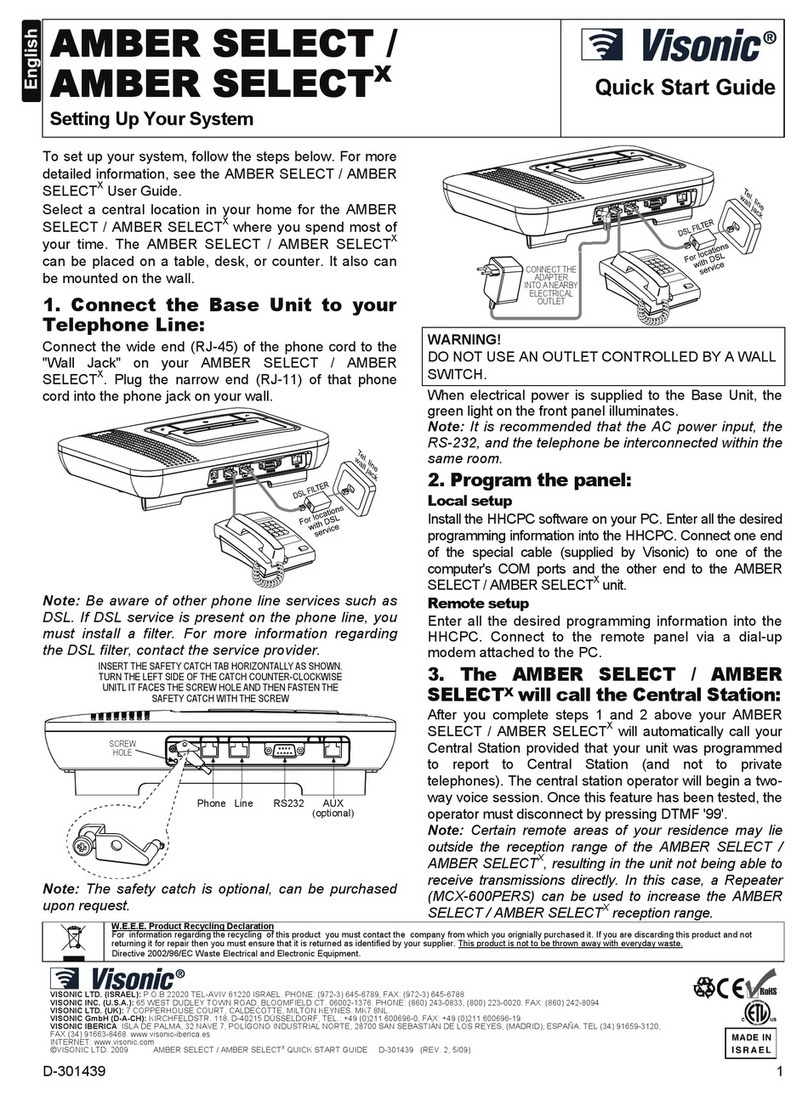
Visonic
Visonic AMBER SELECT quick start guide
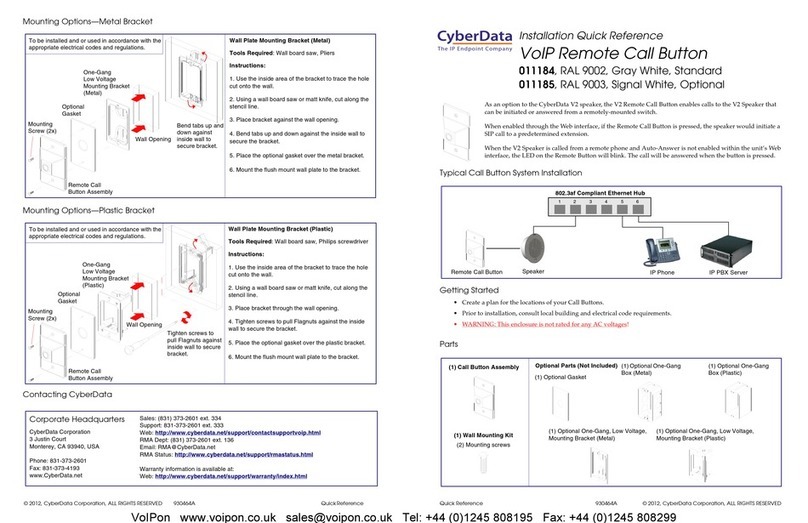
CyberData
CyberData RAL 9003 Installation quick reference
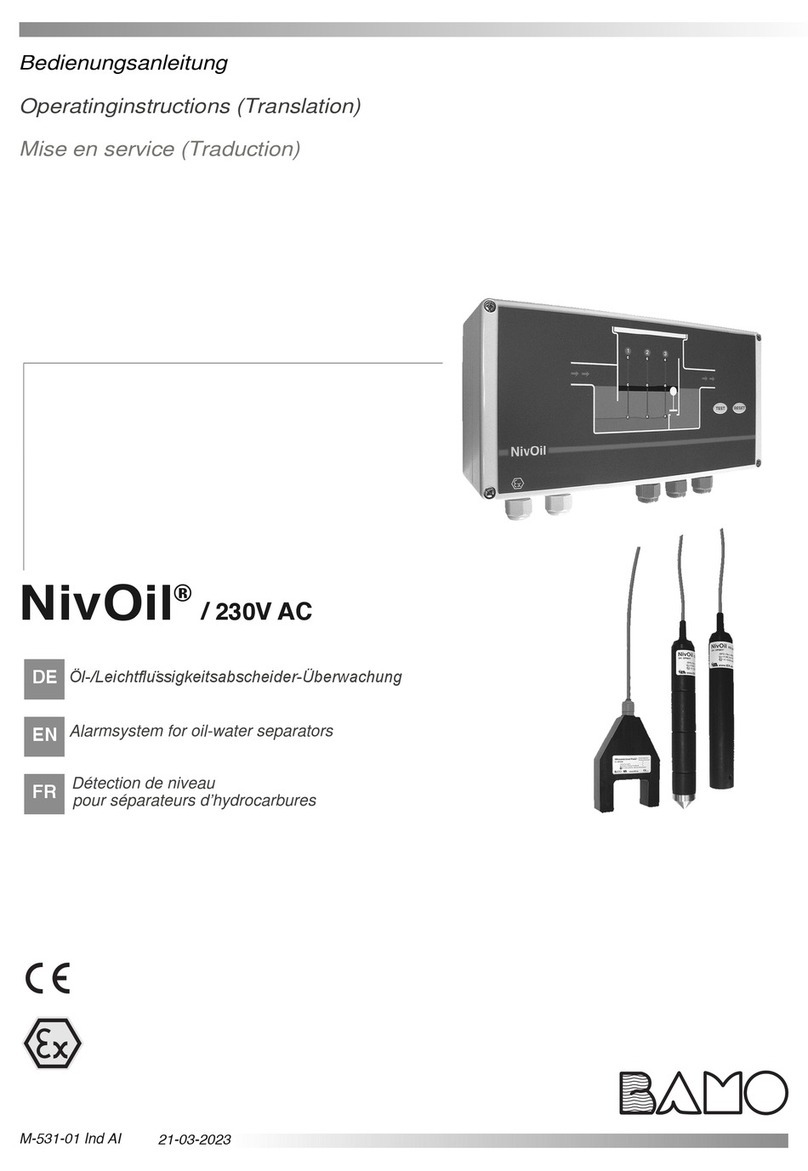
BAMO IER
BAMO IER NivOil operating instructions

Yoga
Yoga Intelligent Smart Home installation manual
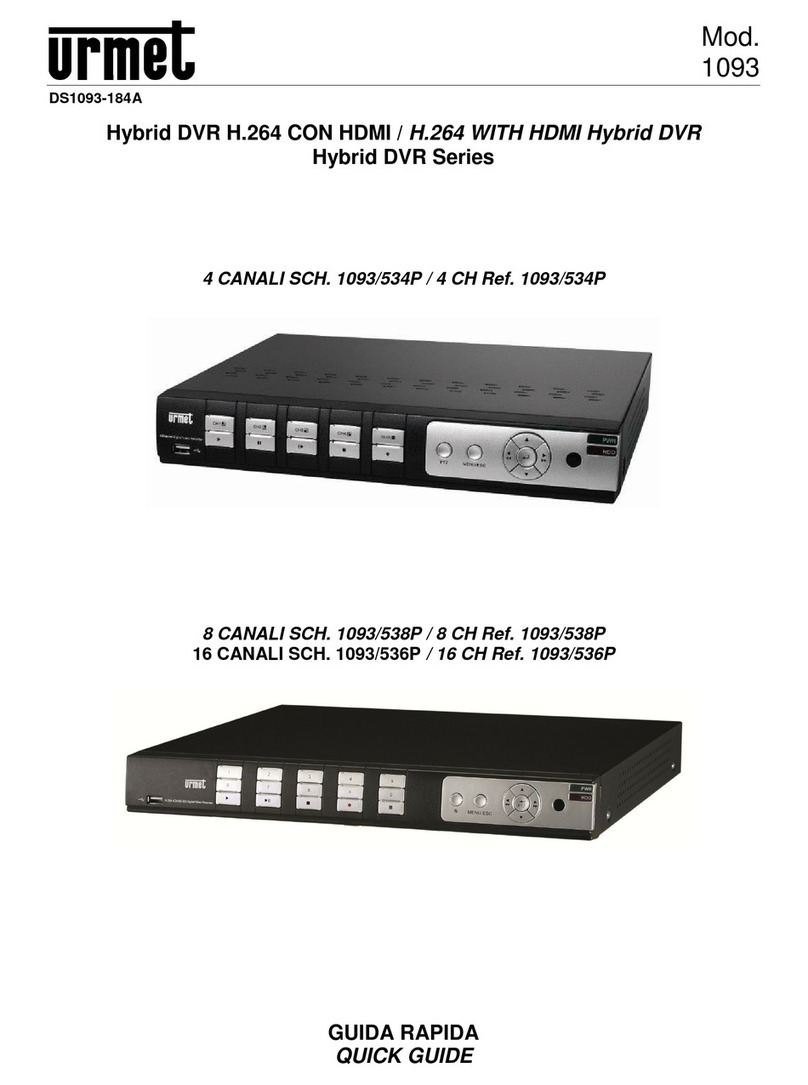
urmet domus
urmet domus Hybrid DVR Series quick guide

